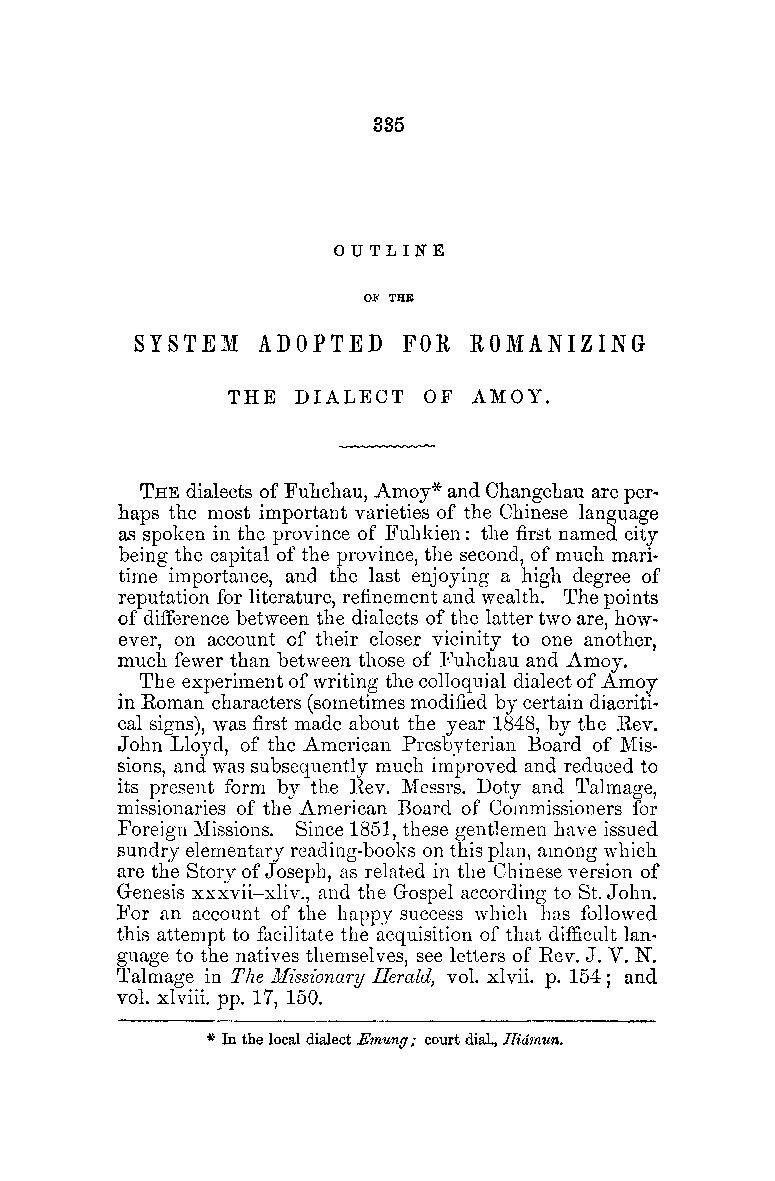Outline of the system adopted for romanizing the dialect of Amoy.
The dialects of Fuhchau, Amoy[1] and Changchau are perhaps the most important varieties of the Chinese language as spoken in the province of Fuhkien: the first named city being the capital of the province, the second, of much maritime importance, and the last enjoying a high degree of reputation for literature, refinement and wealth. The points of difference between the dialects of the latter two are, however, on account of their closer vicinity to one another, much fewer than between those of Fuhchau and Amoy.
The experiment of writing the colloquial dialect of Amoy in Roman characters (sometimes modified by certain diacritical signs), was first made about the year 1848, by the Rev. John Lloyd, of the American Presbyterian Board of Missions, and was subsequently much improved and reduced to its present form by the Rev. Messrs. Doty and Talmage, missionaries of the American Board of Commissioners for Foreign Missions. Since 1851, these gentlemen have issued sundry elementary reading-books on this plan, among which are the Story of Joseph, as related in the Chinese version of Genesis xxxvii-xliv., and the Gospel according to St. John. For an account of the happy success which has followed this attempt to facilitate the acquisition of that difficult language to the natives themselves, see letters of Rev. J. V. N. Talmage in The Missionary Herald, vol. xlvii. p. 154; and vol. xlviii. pp. 17, 150.
- ↑ In the local dialect Emung; court dial., Hiamun.
